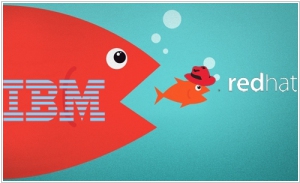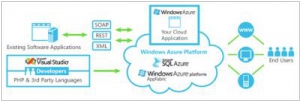Cloud operating systems
Updated: August 01, 2023
Cloud OS, also known as Cloud Operating System, is a cloud-based software platform that provides users with a virtualized environment to run applications and access computing resources over the internet. Unlike traditional operating systems that run on individual devices, Cloud OS operates on remote servers hosted by cloud service providers. Cloud OS allows users to access their applications and data from any device with an internet connection, offering flexibility and mobility. This type of operating system is particularly beneficial for businesses and organizations, as it centralizes data storage, facilitates collaboration, and reduces the need for on-premises hardware and maintenance. With automatic updates and scalable resources, Cloud OS provides a cost-effective and efficient solution for managing and running applications and services in the cloud, empowering businesses to focus on their core operations while leaving the management of infrastructure to the cloud service provider.
See also: Top 10 Public Cloud Platforms
See also: Top 10 Public Cloud Platforms
2018. Largest software deal ever: IBM acquires Red Hat

IBM has announced its acquisition of Red Hat, a prominent developer of Linux operating system distributions. Linux has gained widespread usage in cloud computing platforms, making this deal strategically important for IBM. In fact, this acquisition sets a new record in the software market. Previously, the record was held by Microsoft, who acquired the social network LinkedIn for $26.2 billion in 2016. When considering all IT deals, IBM's recent purchase ranks third. The top spot is still held by Dell's acquisition of EMC, a data storage systems manufacturer, in 2015 for a staggering $67 billion.
2013. Microsoft pushing Cloud OS
As you know, Microsoft's Windows Azure is the leader in cloud platform market. It's just one of several options along with Amazon Web Services, Google Compute Engine, OpenStack, VMWare vCloud. This situation is very frustrating for Microsoft, which used to be the exclusive platform (OS) vendor. Therefore, Microsoft is coming up with a new thing - Cloud OS. This is not a specific product, but rather a marketing term incorporating several systems: first of all Windows Azure, Windows Server and System Center. The idea is that the Cloud (the legendary thing that stores and processes data) is usually located not in the farm of specific provider (Amazon, Google or Microsoft). It also lives in a rented or own Internet servers and in the office (on local servers). Depending on task, budget and security requirements, each company may choose on where to host data and applications. ***
2010. Windows Azure - available. Google Apps Store - soon.

Today Microsoft has officially opened its cloud platform Windows Azure. It's a cloud for deploying SaaS services and hosting enterprise applications, that provides Microsoft-focused infrastructure and development tools. However, Azure also supports PHP, MySQL, Ruby on Rails, Python, Java, Eclipse and Zend. The main Azure advantage over Amazon Web Services and Rackspace Cloud is the high level of automation, allowing developers to focuse on their applications, rather than on the infrastructure. In addition, this platform enables to integrate hosted apps with the local IT infrastructure with the help of SOAP, REST and XML (thus supporting Microsoft's S+S strategy). The cost of using Windows Azure - is lower than the cost of Windows-infrastructure, built on Amazon. ***


